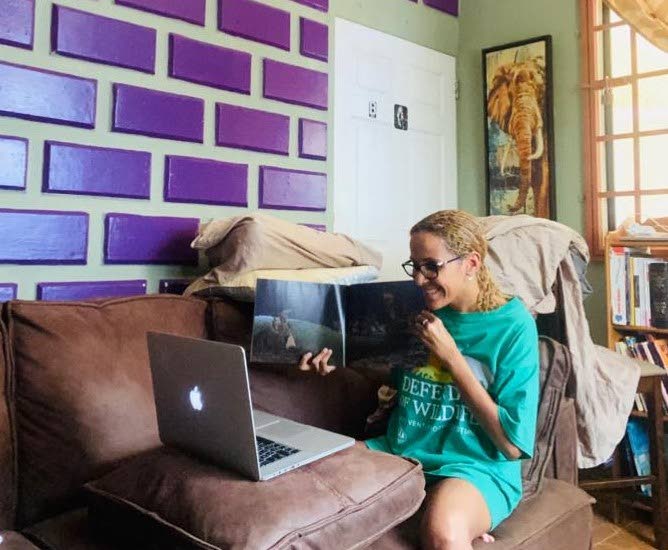How to quarantine at home

With the recent spike in covid19 cases, the numbers of people in home self-isolation continues to rise. Epidemiologist Dr Avery Hinds reminded people to follow the Health Ministry’s protocols for home isolation in order to avoid spreading it to others at their home.
Speaking at Wednesday’s ministry media briefing, Hinds said this also applied to people who were quarantining at home while awaiting results.
“The protocols are on our website. They include remaining in one part of the house, wearing your mask in the household, and not sharing household items.
"There is an increased risk of transmission in a household where those guidelines aren’t followed, but we’ve also seen the success of those guidelines in preventing household transmission.
"So once you’re in a household and aware there is a risk, implementation of all those risk reducing factors is very important.
"Of course, you can reach out to the healthcare system through the hotline to indicate that your household circumstances may not be suitable to do the household isolation in the best possible way and discussions can be had as to how you can be assisted.”
The Health Ministry first announced that home self-isolation for mildly-ill and asymptomatic patients would be allowed on August 26, 2020. CMO Dr Roshan Parasram said those who tested positive and had symptoms would be treated for seven days in quarantine. Then, if three days passed and they showed no further symptoms they would be ordered to self-quarantine for ten days to ensure they could not transmit the disease.
He said those who tested positive but showed no symptoms would spend ten days in quarantine, and must then also self-quarantine for seven days. Those who showed no symptoms would be monitored for ten days from the day they tested positive.
Since then, people who have been tested have also been asked to quarantine at home for 21 days while awaiting their test results, whether negative or positive.
One covid19-positive person, who asked to remain anonymous for fear of stigma, said when he tested positive, he was asked about his daily routine and was then given the go-ahead to stay home.
“I live in an apartment and I asked my roommate to move out, which he did. I stayed indoors most of the time, though I was able to go into the yard to get some fresh air.
"I had gone for groceries the same day I tested positive, though the thermal scanners at the places I visited didn’t register any temperature change.
"When those ran out, a friend bought groceries for me, left them outside my gate and drove off before I went to collect them. I was able to pay him back through online banking.
"I’ve finished quarantine now but I’m doing an extra month before my roommate comes back, to be safe.”
He said the Health Ministry called every day to make sure he was doing well, and he was offered the option of state quarantine.
Alana Morton said when she returned to TT in March 2020, she signed a quarantine order and agreed to quarantine for 14 days.
“We were responsible and adhered to the order. We did not go out. I did not even go past my gate.
"We took one delivery of a food package (frozen meats) since we could not go to the grocery. I wore a mask to interact with the delivery person and he wore a mask.
"I checked our temperature several times a day and monitored for any symptoms.
"We also tried to remain apart from the rest of the household as far as was possible. However, that is difficult if you live in a single-family home. There are five of us and we share the bathrooms. Kitchen and living areas are also shared spaces.
"I know the TTPS checked with neighbors to see if we had gone out.
"At the end of the 14 days, we were healthy and grateful. If I have a positive diagnosis in the future, I would opt for state quarantine to ensure no one else at home would be unnecessarily exposed.”
Some people would be able to live by themselves or a small number of people, while others said they would have difficulty in doing so.
Artist and entrepreneur Ozy Merrique said he lives in a two-bedroom house with three people and decent yard space. He said he didn’t think it would be too hard to home quarantine.
“I guess it comes down to clear ground rules for everyone for the period. I would as a precaution relocate at least one member for the time.
"We’d intensify the regular protocols first, masking, sanitisation, then have separate sleeping areas, super cleaning, exercise shared-spaces and utensil caution, and a lot of outdoor and separation time.”
Writer Avah Atherton said it would be impossible for her or anyone in her household to self-quarantine, as they share a single kitchen and two bathrooms.
“It's a family of 12, with nine children, so it will be difficult to impossible to keep them isolated from each other, or the adults from them, especially due to the small house size and sleeping arrangements.”
Health Ministry guidelines for home quarantine
People should stay in their home or accommodation and not go to work, school, or other public areas.
Separate yourself from others living in uour home or accommodation.
If possible, find alternative accommodation and stay by yourself.
Use separate facilities (eg. bathrooms). If sharing, these should be cleaned before use by other people.
Wear a mask when you are around others, including those living inside your home or accommodation.
Do not allow visitors in your home or accommodation.
Have food, medication, and other supplies delivered to you.
Wash your hands before and after contacts with your pets.


Comments
"How to quarantine at home"